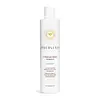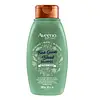What's inside
What's inside
 Key Ingredients
Key Ingredients

No key ingredients
 Benefits
Benefits

 Concerns
Concerns

 Ingredients Side-by-side
Ingredients Side-by-side

Water
Skin ConditioningCocamidopropyl Hydroxysultaine
CleansingSodium Methyl Cocoyl Taurate
CleansingGlycerin
HumectantCaprylyl/Capryl Glucoside
CleansingSodium Cocoyl Isethionate
CleansingGlyceryl Stearate Se
EmulsifyingSodium Chloride
MaskingSodium Lauroyl Methyl Isethionate
CleansingTrisodium Ethylenediamine Disuccinate
Guar Hydroxypropyltrimonium Chloride
Skin ConditioningPlumeria Acutifolia Flower Extract
Skin ConditioningCananga Odorata Flower Oil
MaskingLavandula Angustifolia Oil
MaskingCitrus Aurantium Dulcis Peel Oil
MaskingSalvia Sclarea Oil
MaskingVanillin
MaskingPogostemon Cablin Leaf Oil
MaskingGlycine Soja Oil
EmollientSodium Benzoate
MaskingPyrus Malus Fruit Extract
Skin ConditioningPotassium Sorbate
PreservativeSimmondsia Chinensis Seed Oil
EmollientOryza Sativa Extract
AbsorbentCitric Acid
BufferingHydrolyzed Quinoa
Skin ConditioningHydrolyzed Rice Protein
Skin ConditioningCalophyllum Inophyllum Seed Oil
AntimicrobialButyrospermum Parkii Butter
Skin ConditioningPersea Gratissima Oil
Skin ConditioningTaraxacum Officinale Leaf Extract
Skin ConditioningSalvia Officinalis Leaf Extract
CleansingMelissa Officinalis Leaf Extract
Skin ConditioningLinalool
PerfumingLimonene
PerfumingWater, Cocamidopropyl Hydroxysultaine, Sodium Methyl Cocoyl Taurate, Glycerin, Caprylyl/Capryl Glucoside, Sodium Cocoyl Isethionate, Glyceryl Stearate Se, Sodium Chloride, Sodium Lauroyl Methyl Isethionate, Trisodium Ethylenediamine Disuccinate, Guar Hydroxypropyltrimonium Chloride, Plumeria Acutifolia Flower Extract, Cananga Odorata Flower Oil, Lavandula Angustifolia Oil, Citrus Aurantium Dulcis Peel Oil, Salvia Sclarea Oil, Vanillin, Pogostemon Cablin Leaf Oil, Glycine Soja Oil, Sodium Benzoate, Pyrus Malus Fruit Extract, Potassium Sorbate, Simmondsia Chinensis Seed Oil, Oryza Sativa Extract, Citric Acid, Hydrolyzed Quinoa, Hydrolyzed Rice Protein, Calophyllum Inophyllum Seed Oil, Butyrospermum Parkii Butter, Persea Gratissima Oil, Taraxacum Officinale Leaf Extract, Salvia Officinalis Leaf Extract, Melissa Officinalis Leaf Extract, Linalool, Limonene
Colloidal Oatmeal Extract
HumectantWater
Skin ConditioningSodium C14-16 Olefin Sulfonate
CleansingCocamidopropyl Betaine
CleansingMentha Piperita Oil
MaskingCucumis Sativus Fruit Water
Skin ConditioningRosmarinus Officinalis Leaf Oil
MaskingPolyquaternium-22
PEG-7 Amodimethicone
HumectantLinoleamidopropyl Pg-Dimonium Chloride Phosphate
Polyquaternium-39
Sodium Hydrolyzed Potato Starch Dodecenylsuccinate
PEG-150 Pentaerythrityl Tetrastearate
EmulsifyingPPG-2 Hydroxyethyl Cocamide
EmulsifyingPropylene Glycol
HumectantGlycerin
HumectantHexylene Glycol
EmulsifyingSodium Citrate
BufferingCitric Acid
BufferingSodium Hydroxide
BufferingSodium Benzoate
MaskingParfum
MaskingColloidal Oatmeal Extract, Water, Sodium C14-16 Olefin Sulfonate, Cocamidopropyl Betaine, Mentha Piperita Oil, Cucumis Sativus Fruit Water, Rosmarinus Officinalis Leaf Oil, Polyquaternium-22, PEG-7 Amodimethicone, Linoleamidopropyl Pg-Dimonium Chloride Phosphate, Polyquaternium-39, Sodium Hydrolyzed Potato Starch Dodecenylsuccinate, PEG-150 Pentaerythrityl Tetrastearate, PPG-2 Hydroxyethyl Cocamide, Propylene Glycol, Glycerin, Hexylene Glycol, Sodium Citrate, Citric Acid, Sodium Hydroxide, Sodium Benzoate, Parfum
Ingredients Explained
These ingredients are found in both products.
Ingredients higher up in an ingredient list are typically present in a larger amount.
Citric Acid is an alpha hydroxy acid (AHA) naturally found in citrus fruits like oranges, lemons, and limes.
Like other AHAs, citric acid can exfoliate skin by breaking down the bonds that hold dead skin cells together. This helps reveal smoother and brighter skin underneath.
However, this exfoliating effect only happens at high concentrations (20%) which can be hard to find in cosmetic products.
Due to this, citric acid is usually included in small amounts as a pH adjuster. This helps keep products slightly more acidic and compatible with skin's natural pH.
In skincare formulas, citric acid can:
While it can provide some skin benefits, research shows lactic acid and glycolic acid are generally more effective and less irritating exfoliants.
Most citric acid used in skincare today is made by fermenting sugars (usually from molasses). This synthetic version is identical to the natural citrus form but easier to stabilize and use in formulations.
Read more about some other popular AHA's here:
Learn more about Citric AcidGlycerin is already naturally found in your skin. It helps moisturize and protect your skin.
A study from 2016 found glycerin to be more effective as a humectant than AHAs and hyaluronic acid.
As a humectant, it helps the skin stay hydrated by pulling moisture to your skin. The low molecular weight of glycerin allows it to pull moisture into the deeper layers of your skin.
Hydrated skin improves your skin barrier; Your skin barrier helps protect against irritants and bacteria.
Glycerin has also been found to have antimicrobial and antiviral properties. Due to these properties, glycerin is often used in wound and burn treatments.
In cosmetics, glycerin is usually derived from plants such as soybean or palm. However, it can also be sourced from animals, such as tallow or animal fat.
This ingredient is organic, colorless, odorless, and non-toxic.
Glycerin is the name for this ingredient in American English. British English uses Glycerol/Glycerine.
Learn more about GlycerinSodium Benzoate is a preservative. It's used in both cosmetic and food products to inhibit the growth of mold and bacteria. It is typically produced synthetically.
Both the US FDA and EU Health Committee have approved the use of sodium benzoate. In the US, levels of 0.1% (of the total product) are allowed.
Sodium benzoate works as a preservative by inhibiting the growth of bacteria inside of cells. It prevents the cell from fermenting a type of sugar using an enzyme called phosphofructokinase.
It is the salt of benzoic acid. Foods containing sodium benzoate include soda, salad dressings, condiments, fruit juices, wines, and snack foods.
Studies for using ascorbic acid and sodium benzoate in cosmetics are lacking, especially in skincare routines with multiple steps.
We always recommend speaking with a professional, such as a dermatologist, if you have any concerns.
Learn more about Sodium BenzoateWater. It's the most common cosmetic ingredient of all. You'll usually see it at the top of ingredient lists, meaning that it makes up the largest part of the product.
So why is it so popular? Water most often acts as a solvent - this means that it helps dissolve other ingredients into the formulation.
You'll also recognize water as that liquid we all need to stay alive. If you see this, drink a glass of water. Stay hydrated!
Learn more about Water